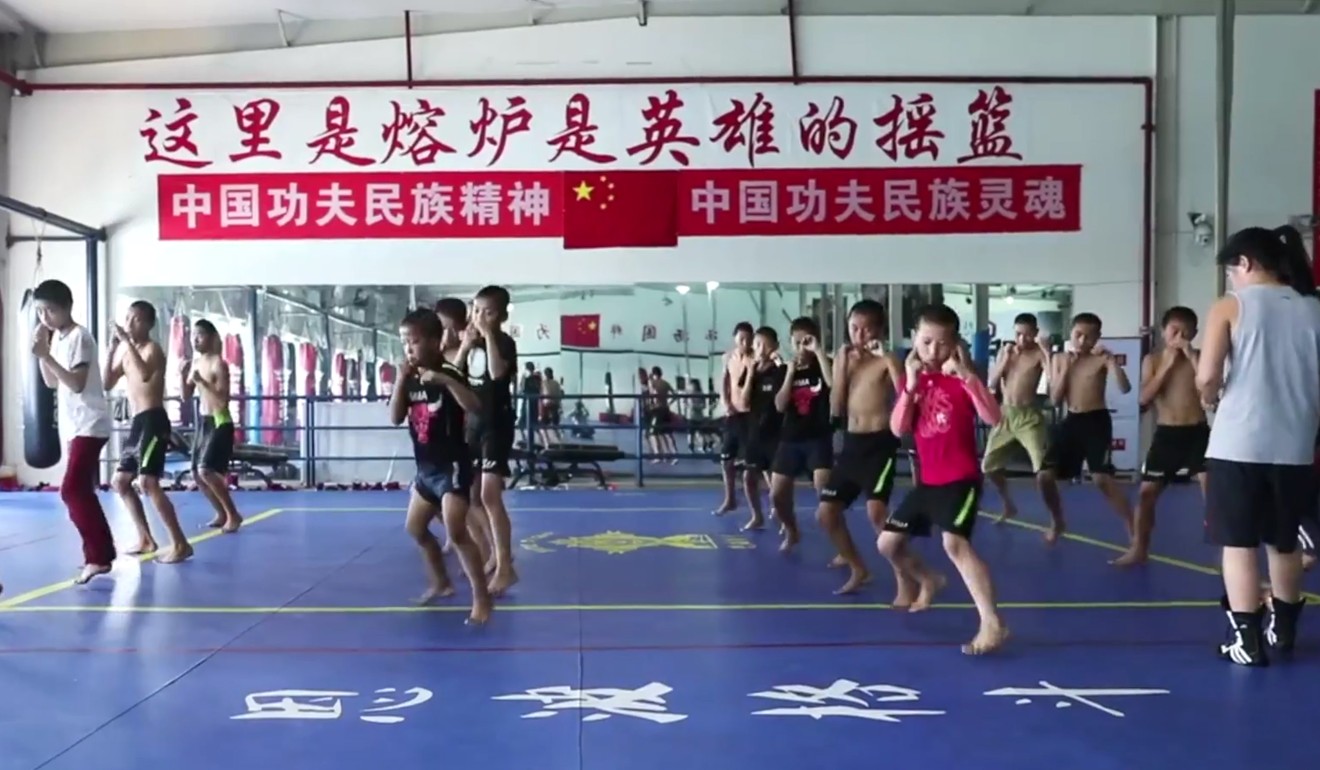At the Mercedes-Benz Arena in Shanghai, a sold-out crowd of over 15,000 watches Wang Guan face off against Alex Caceres. For the local fans, it’s clearly a matter of national pride. Wang, nicknamed “The Dongbei Tiger”, is making his UFC debut, and there’s a near-visible stream of raw patriotic energy pouring into him from all sides of the stadium. The afro-topped Caceres, who goes by “Bruce Leroy”, seems less than worried. He bounces around the octagon smiling, throwing out kung fu poses and Chinese bows.
That is, until the end of the first round, when a left hand from Wang finds home during an exchange. The audience explodes as Caceres crashes to the ground and Wang leaps on top of him to drop bombs. A few seconds later, the ref pulls Wang off of the stunned Caceres, in what seems to be the end of the fight. The crowd is ecstatic, but after some communication in the octagon, it becomes apparent that the round had ended just before a TKO could be called, and the two square up to continue. The room becomes increasingly silent as the audience prepares itself for the possibility of having their victory ripped away.
But it doesn’t happen. Caceres suffers further knockdowns over the next two rounds, after which Wang is given the judge’s decision. The other Chinese fighters in the evening’s card fare well too, with five out of the eight taking home victories, and a couple leaving with Performance of the Night bonuses.
It’s an auspicious start for UFC in China, and the league’s Shanghai Fight Night represents the most concrete arrival for the sport so far.
China’s long and complex history with martial arts makes the adoption of MMA a unique challenge. The cultural tradition of kung fu was kind of painted over in the 20th century, when the practice of traditional martial arts was outlawed during the sweeping bans on pre-Maoist Chinese culture. Instead we got contemporary wushu, the high flying performance-based kung fu style you see in movies, and sanda, a form of Chinese kickboxing with roots in traditional martial arts.
But until recently, MMA has been kind of a fringe practice. All kinds of reasons explain why China has yet to make a substantial mark in the world of MMA. There’s a lack of infrastructure to develop world-class fighters and teams. There are economic and bureaucratic roadblocks stopping homegrown leagues from gaining major traction. Foreign developers trying to grow the sport in China run into legal obstacles. While Japan, Korea, and a host of other Asian countries have all developed distinct combat sport identities, China is only just now starting to publicly question the differences between traditional martial arts and modern combat sports, after MMA fighter Xu Xiaodong obliterated a helpless tai chi master in a video that went viral earlier this year.

Boys training at an MMA club in Chengdu. Photo: Handout
But as the UFC finally squeezes its way into the Mainland, things are starting to change. Maybe it’s part of China’s recent athletic reforms in an effort to become a major world sporting power (they announced their 30 year plan to become a top soccer nation last year, and we recently covered their entry into long-distance ocean racing), or maybe it’s just part of the cultural shifts bringing Chinese sports fans closer to their western counterparts. Either way, China’s MMA scene is finally beginning to kick off in earnest, with professional fighters starting to receive the support they deserve.
Li Jingliang was one of the most anticipated fighters of the night, stepping into his 18th professional fight against American Zak Ottow, and winning via first round technical knockout. He cited his training with American Top Team in the United States for his improvement in recent months.
“I have to thank American Top Team and especially Coach Conan. In the US, the biggest difference is that you really get to know what pro fighters should do in the ring, and what they shouldn’t do. It was incredibly valuable for me to spend those two months training there, and the difference compared with the kind of training we have in China is huge. After tonight’s victory I’ll be going back to Xi’an to see my family and get some rest, but when my next fight comes up, I’ll definitely return to American Top Team to train. This is my responsibility — to train with the best and be the best.”
With an initial generation of Chinese fighters starting to break out, everyday people are taking notice, and that goes for fans as well as hobbyists. TV and online viewer ratings are on the rise, and major cities are seeing a boom of new gyms. Wu Deming is an MMA student who works in advertising, and talks about the change as natural and inevitable.
“People here are generally aware of combat sports, at least boxing since the Mike Tyson era, it’s just never been too popular in China. Still, in the past few years they’ve started broadcasting it more online and on TV, and with a higher standard of living and more young people, people are going to want to pursue more original hobbies and lifestyles. Fighting is just one of them, but even if you don’t try it yourself, you might still end up watching it. The sport itself is just naturally eye-catching.”
Inside the UFC, the general opinion is the same. Kevin Chang, Vice President of UFC Asia-Pacific, expressed to Radii his high hopes for the future.
“On the fan side, it’s about the momentum. You start out with a small and very loyal group of fans, and they’ve just been champions, and we thank them for their support through the years, because they were the root. On the athlete’s side, I think [what we saw tonight] is a natural evolution of MMA. With Song Yadong tonight for instance being so young, he’s part of the new wave of MMA talent. They come in not just focused on a single discipline, but really having the entire skillset, and training it from a very early age. That showed tonight, so it’s very encouraging.”
The night’s main card winner, Kelvin Gastelum, who pulled off a surprise first round knockout against legend Michael Bisping, echoed the sentiment. When we asked him about the future of MMA in China, he compared it to the beginning of the sport in Mexico.
“This reminds me a lot of when we did the first event in Mexico. I was co-headlining it along with Verdum. It just reminds me of the beginning of a huge boom in that country — after this event, there’s going to be a huge boom of Chinese fighters, and they’re going to be big stars in the UFC, just like we’ve seen Mexican stars rise up. In the next few years, we’re going to see a lot of Chinese stars coming out.”
















